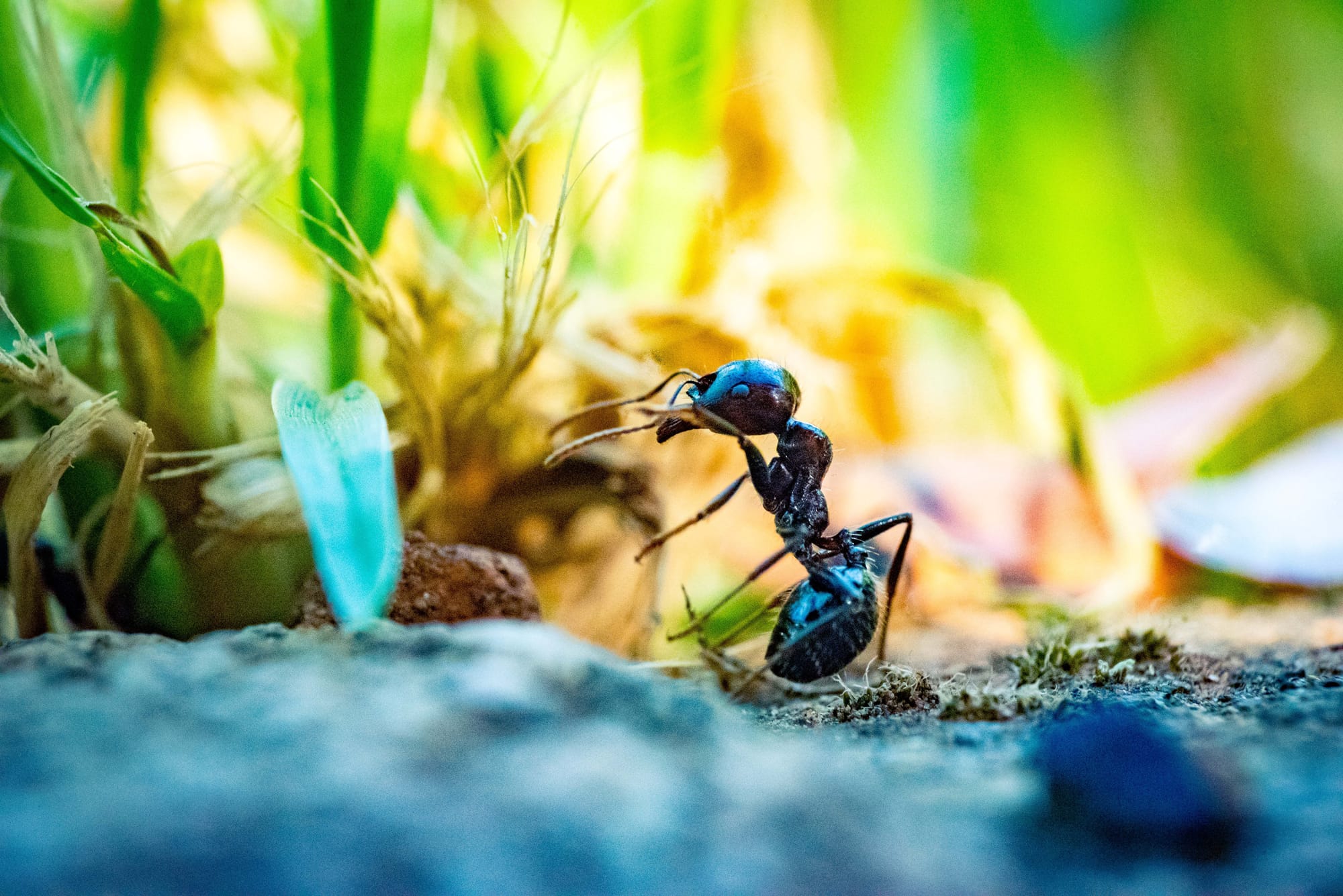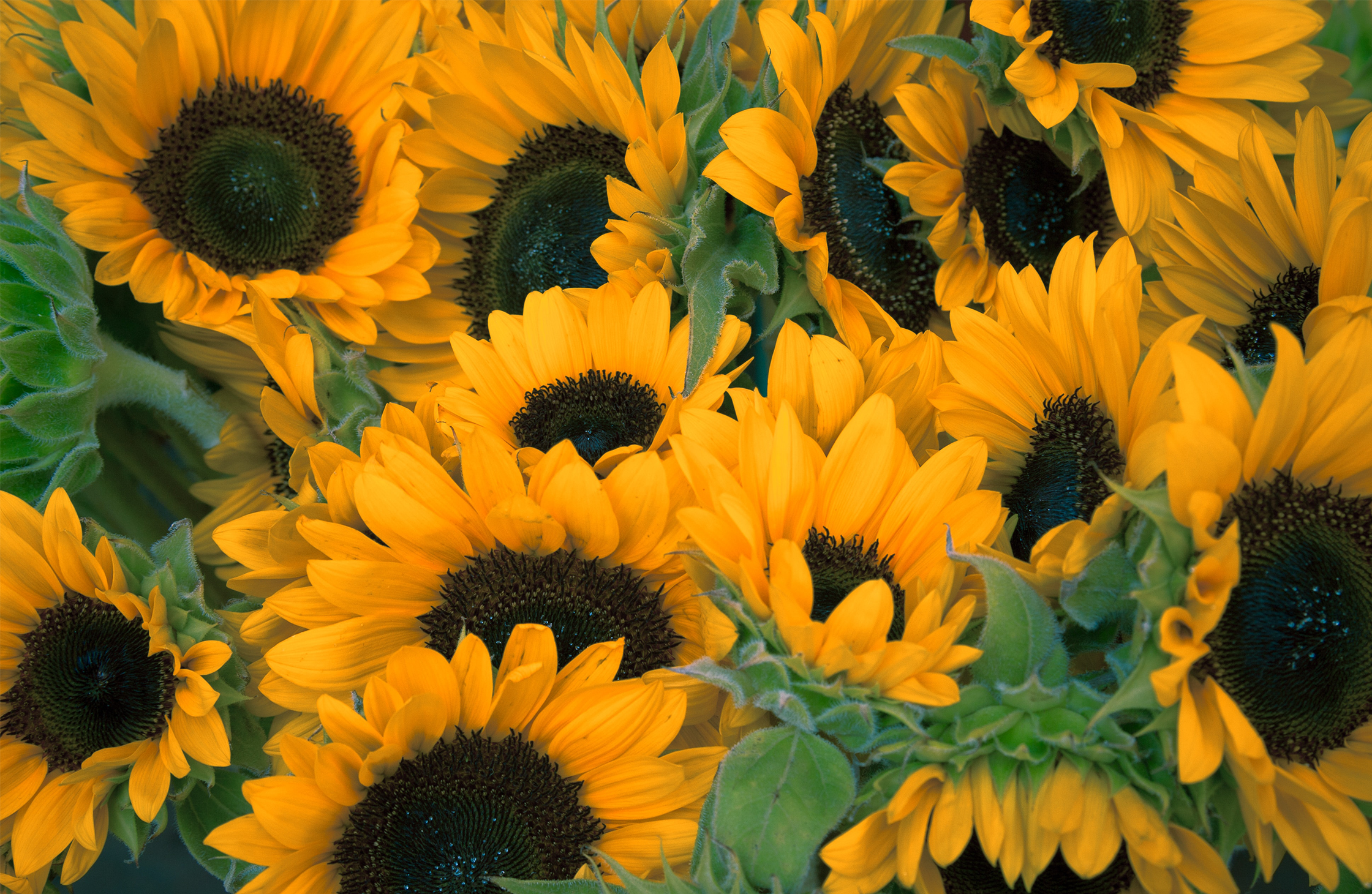Photo by Gérôme Bruneau on Unsplash
It’s the end of the year… and the end of my first year in the WSU Master Gardener program! As a chef who knew almost nothing about gardening, this year was full of learning, connections, working on a tight budget, and being genuinely surprised that anything actually grew. As is customary for the December issue, I thought I’d do a best five and worst five of my first year trying to garden on a budget.
Worst Things:
5. The shade: One of the first things any book, blog, or person will tell you to do when starting a garden is to watch the sun throughout the year to see where it falls. There are generally three designations for planting: full sun, partial sun, and shade. However, sometimes the land you have to use varies in sunlight throughout the day and growing season (perhaps because of your neighbor’s giant tree that they don't take care of). You just go with what you’ve got. I tried my best to put the peppers and tomatoes in the area furthest from the tree’s giant shadow — but to no avail. While I did get some peppers and tomatoes, I didn’t get as many as I should have, and they came much later in the season. The potatoes, however, loved the partial sun and thrived; so it’s all about finding the right plant for the space.
4. Weather snaps: It is no surprise to anyone reading this publication that climate change is changing things for growers all over the world. For people in Washington, not only are traditional climate zones rising across the state, but fluctuations are also increasing in frequency. Cold snaps and heat waves have always happened, but as a new gardener, it can be difficult to use best-growing practices when growing seasons are changing. At the beginning of the season, we had a week of really hot weather that caused a lot of people's brassicas to bolt and go to seed before harvest. My second batch of radishes should have had time for the roots to swell, but instead, the plants shot up tall and I had to use them for greens instead. The few roots I did get were very spicy (which was the only benefit of the situation).
3. Cheap ground cloth: Another common problem that even the average home landscaper could tell you is the prevalence of cheap, flimsy ground cloth. While you might think like me — that the savings will be worth it — I can guarantee you, I was wrong. The cloth I used to build my raised pallet beds didn’t even make it a whole season before breaking down, which was particularly upsetting for me since the slats in the pallets mean that some of my beds will need to be redone next season to hold a proper amount of soil. Do your research, and buy heavy; I wish I had.
2. Blossom-end rot and powdery mildew: This section should really be about all of the common garden diseases, but for me and others in the community, blossom-end rot and powdery mildew cause the biggest problems with most backyard veggies. End rot is caused by a lack of calcium in the developing fruit of the plant. This doesn’t necessarily mean that you need more calcium in the soil; more likely, it’s a problem with watering. Fluctuations in watering — too much or too little water — will prevent the plant from pulling the calcium from the soil into the plant. There can also be a runaway issue: when too much fertilizer is added in an attempt to cure end rot, it creates an excess of nitrogen which causes the same problem. There is nothing worse than raising beautiful tomato and pepper plants just to watch every fruit go bad before maturing.
Powdery mildew hits a lot of different plants, but I had a particularly difficult time with it hopping along my squash leaves. If left unattended, it will cover and kill multiple plants. There are a variety of suggested solutions — like spraying the leaves with baking soda water — but the best solution I’ve found was to fully remove any affected leaves you see as soon as you can.

1. Earwigs and ants: There are many insects that plague local gardeners (squash bugs come to mind first) but there is something about earwigs and ants that, at least for me, make them the worst part of trying to grow anything outside. I live in Richland, and we basically live on top of ant capital, constantly having trouble with them coming into the house. Unfortunately for me, the exterminator company doesn’t have a garden plan to keep them from running rampant through the garden. While having some ants helps with the natural ecosystem, a colony of them running through your brassicas can wreck things. The best solution I’ve found was diatomaceous earth (DE). It’s safe for pets and doesn’t ruin the water table. It only works when it’s dry, so that can be an issue right after watering or with morning dew.
As for earwigs, they’ve always creeped me out. I’m still traumatized from when I left the lawnmower out in the grass as a kid, and hundreds of scattering creepy-crawlies fell from every crevice when I moved it the next day. As an adult, I’m less physically intimidated but they whole-cloth destroyed every leafy vegetable I planted in both the spring and fall. Lettuces, brassicas, and parsnips all fell to the chomping mouths of those horrible creatures. I just hate them. As for what to do about it, I found the damage was significantly reduced when I switched from using boards on the ground to mark my garden sections to elevated rope, removing their ability to sleep right by the food they were eating. You can also try trapping them with small sunken containers of oil, but I couldn’t stomach that idea.
Best things:
5. Sunflowers: They grow so well that by the end of my first year of gardening, I had three completely different varietals growing tall and giving the bees much-needed pollen. We had a lot of flowers and plants growing out back, but looking out the window and seeing the tall yellow flowers that I had grown as a kid made the whole place feel that much more complete. Sadly, my first batch of standard sunflowers ended up being eaten from the inside, killing 80% of their flowers. Did I mention that insects are the worst?
4. The internet: I know it’s become ubiquitous, but the ability to take pictures of problems and ask countless professional and home gardeners questions instantly can’t be overstated. Facebook, Reddit, and message boards galore offer genuine suggestions and help from people who really want you to succeed. Try to find local sources first, since gardening issues change vastly with distance. Also, even if you see several blogs saying to use a home remedy, it’s best to check sources to make sure you’re going with the science.
3. Irrigation: Going into this year, I thought for sure I could use a combination of the large yard sprinkler and hand watering to cover all the square footage I had. I even had other people agree that it would be more time-intensive but doable. Thankfully, I was able to go to a fellow Master Gardener's house and see her setup using irrigation tubing and cheap microsprayer heads. I was trying to build my space using the lowest cost options but this was the best money I spent on the whole project. Not only can it water at times in the morning I just couldn’t be up at, but the ability to water low to the ground, and cover as much area as the microsprayers could, allowed me to grow on all of my land instead of only sections of it.
2. Life: I was genuinely surprised by how many gardeners I talked to who said there was just a connection with the land that kept them gardening — a form of therapy that involved digging in the dirt and pulling weeds. It’s so common, I wonder if it’s not the most popular reason people garden as a hobby in the first place. As a chef who was gardening to get more fresh food to people, my goals and motives were so far away from that concept that I just couldn’t connect to it. I spent hours of work each week weeding and tending to my crops — not because I felt some catharsis in the work or any closeness to Gaia, but because I wanted to make sure the house next door with five kids could have a bit more fresh veggies in their diets, and so that my client who hadn’t eaten a sunchoke since her mom got too old to grow them could make that connection again.
To be honest, it made me feel out of place; I didn’t belong with these greenthumbs that could take solace in the mere presence of the life they created and cultivated. Don’t get me wrong, it was cool seeing a tiny eggplant seed take months of care and attention to turn into the perfect aubergine to harvest, but it’s not like I felt anything soul-changing. That is, not until the advent of the pumpkins — the giant pumpkins that took over the back section with their galloping vines that swarmed everything in their path. The leaves were larger than my handspan; they blanketed the soil that had been lifeless weeks before. Nothing else wanted to grow out there.
Mostly, though, it was the flowers — the perfect squash blossoms that propagated along fencing, through the wood pile, over dead tomato plants, and everywhere else they could. Those flowers brought so many bees that I sat in the middle of it all with my camera for what felt like forever, taking picture after picture of these perfect pollinators going about their work. It was amazing, and at the end of it all, I had several large pumpkins to give to people — a massive achievement of life, the combined effort of so many other living things working together.
1. Connections: It sounds cheesy, but making connections in the community really is as great as people say it is. I spend hours each week listening to podcasts about the state of the world and the things going on at a macro level; it can make me feel insignificant and helpless. The solution was to get involved with the people around me, this place I grew up in but had been away from for so long. My nonprofit work has been a great way for me to do that, but it’s nothing compared to the connections I have made learning to garden. The Master Gardener program has let me learn, teach, and help out so many different people in the Tri-Cities. Growing all these vegetables to give away to my neighborhood has let me feel more present in the life that’s happening around me. That’s not even mentioning all the businesses that were more than happy to help me with starting my garden: pallets from McCurly, dirt from Sunset Gardens cemetery, educational (and emotional) support along with seeds and startup equipment from Tri-City Garden Supply. Trying to do good for the community will quickly show you that you’re not alone, and knowing that is what keeps me going.
Nonprofit chef, master gardener in training, farmers market enthusiast.
Instagram: @food4everyonetc and @blackapronwa


